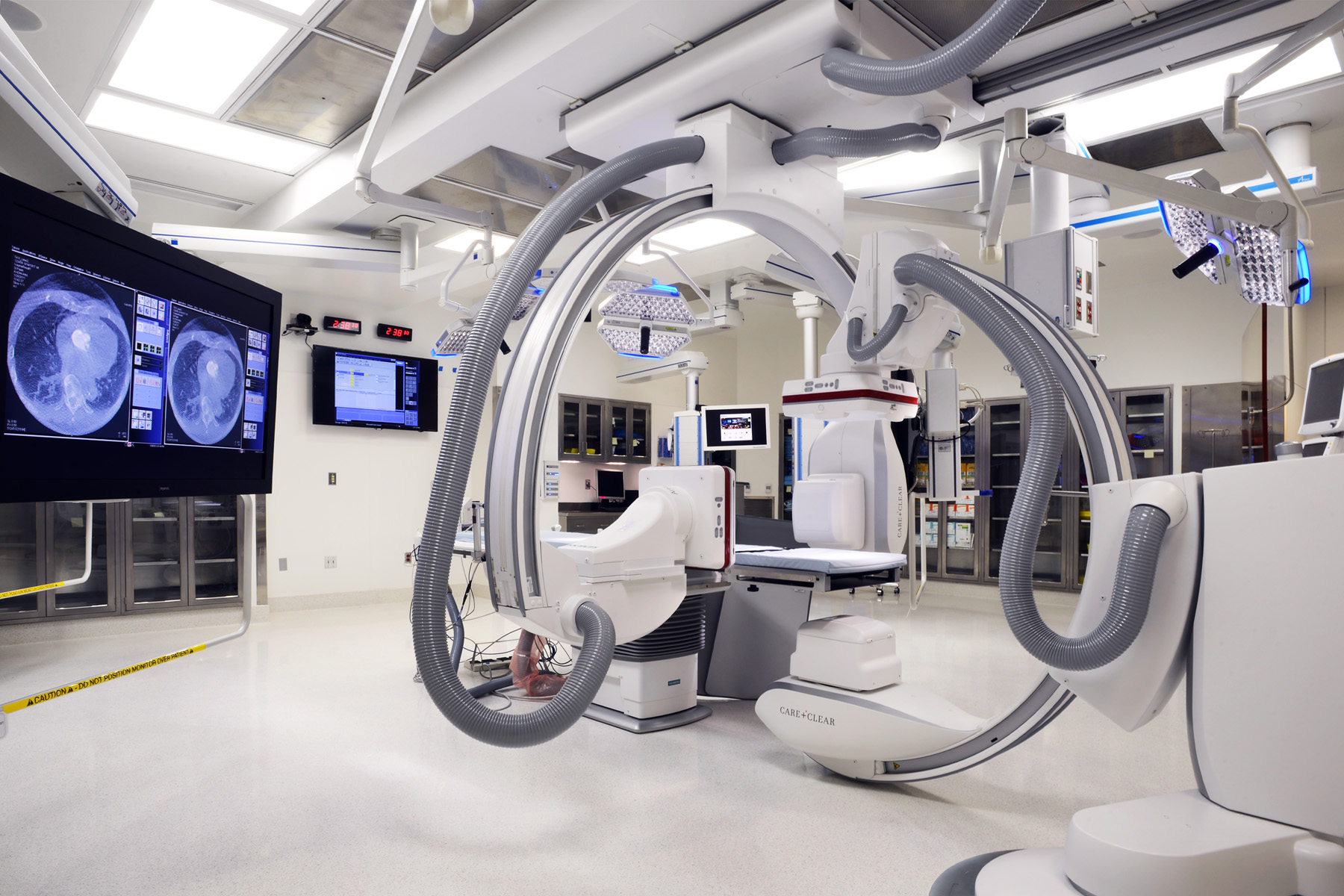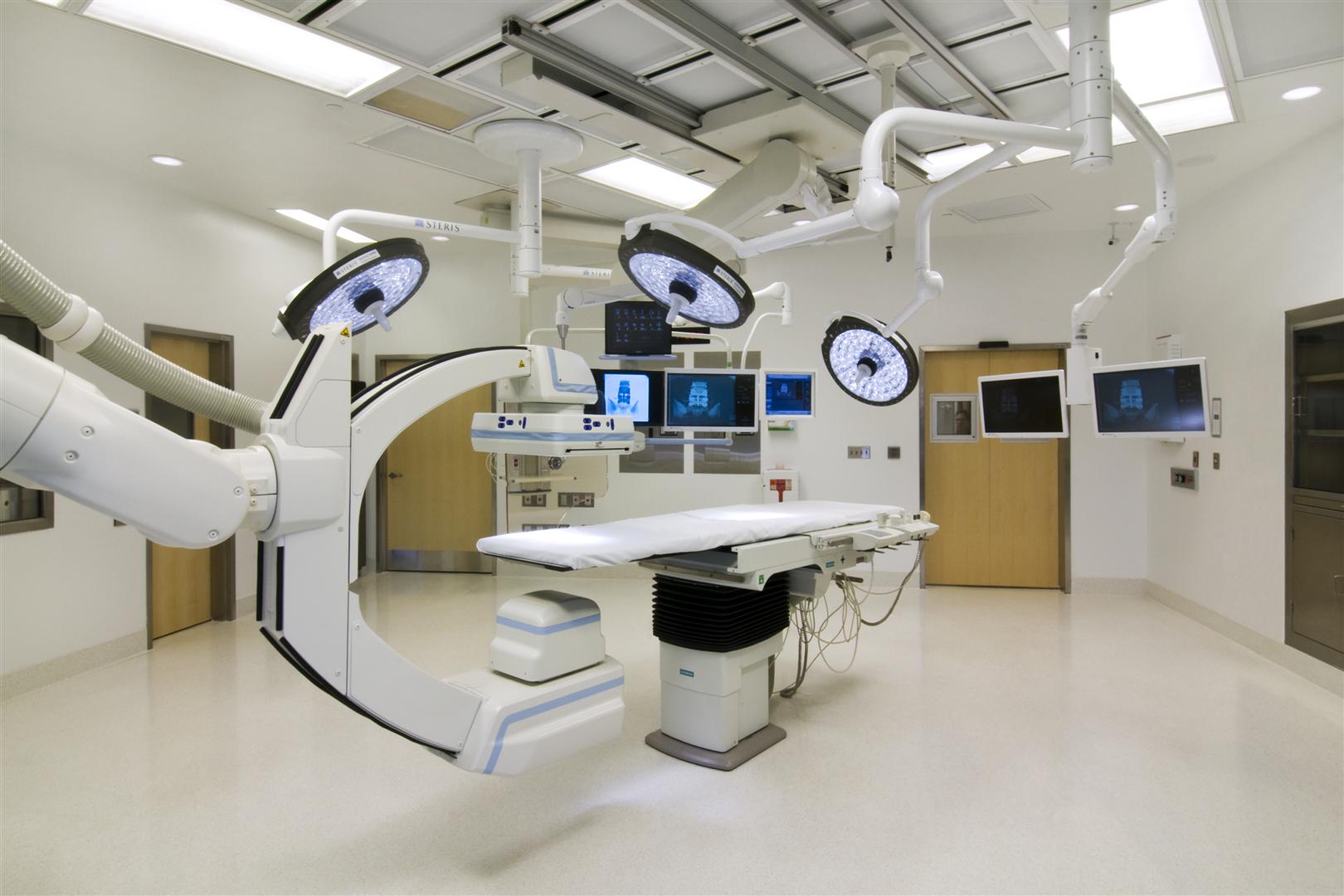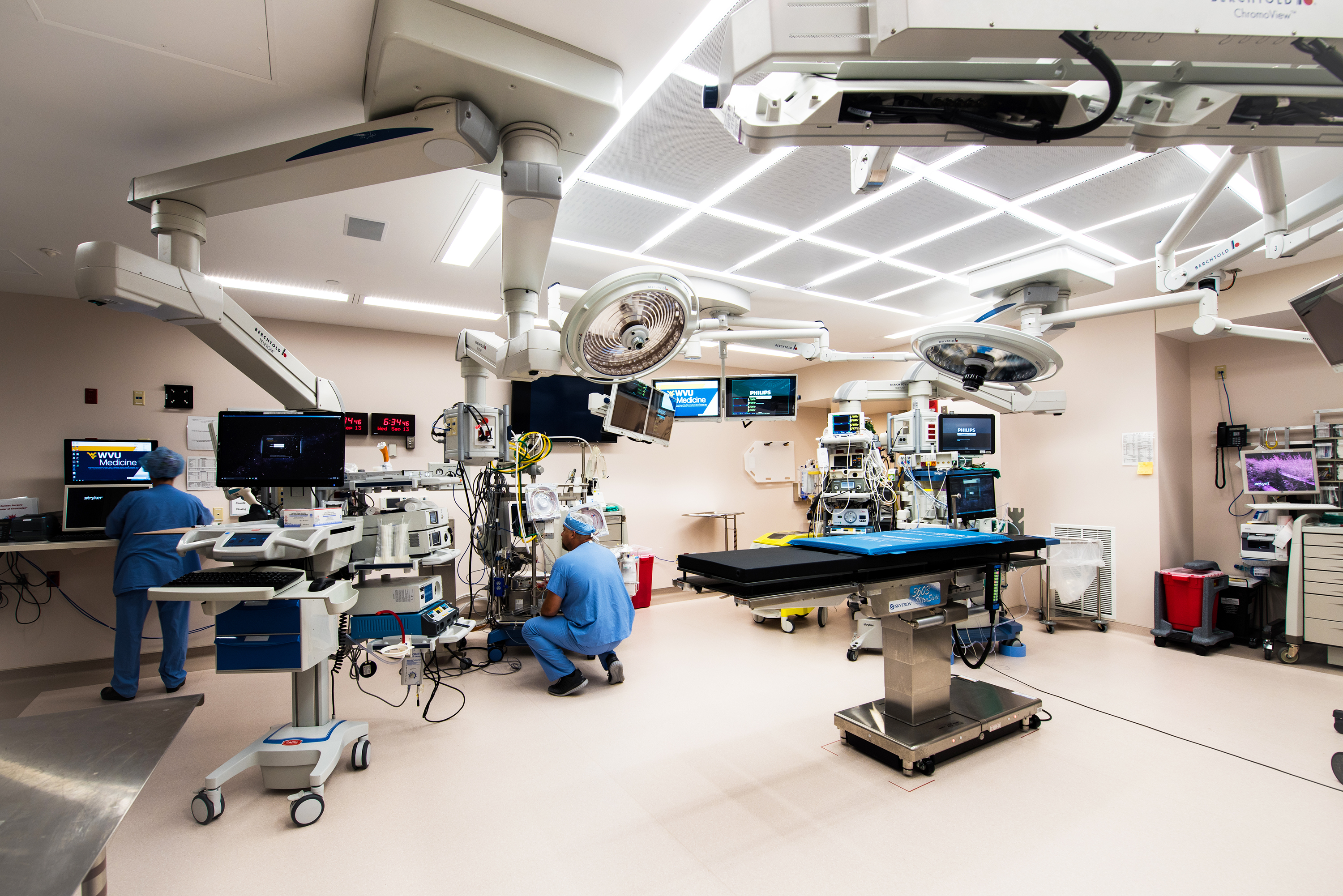A New Beat: Cardiac Care Design
While a decade ago it was common to see new heart centers delivered that were focused mainly on cardiology, hospital systems today are enlisting architecture firms to build facilities capable of housing more comprehensive interventional procedures or heart and vascular (and sometimes even neurovascular) offerings.
“Progressive health leaders are heading to a clinical view that’s more holistic and far less siloed,” says David Jaeger, principal and healthcare design studio director at HED (Southfield, Mich.). “Patients are and will continue to be getting more acute with complex issues; treating them and all their issues requires significant caregiver coordination.”
For proof, look no further than a recent HED project, West Virginia University (WVU) Health System’s new 10-story addition at J.W. Ruby Memorial Hospital in Morgantown, W.Va., which opened in phases in 2017. The facility is the result of leaders at WVU deciding to change course after construction had begun on a women’s and children’s tower on the site to instead provide a one-stop shop for cardiac care there. The goal was to bring together its previously disparate services while also ramping up procedural offerings.
“When they switched gears, leadership said we needed to think differently and build something great,” says former OR nurse Holly Garon, assistant vice president, surgical services at WVU Medicine. “So they changed their vision to have a heart and vascular institute that’s designed for complete care of the patient who has cardiovascular pathology.”
Since the opening of the 110,000-square-foot Heart and Vascular Institute, WVU has seen its volume for cases, including open heart, catheterization, electrophysiology, and vascular, increase 55 percent between August 2017 and August 2018 and its surgical staff grow from one to five cardiac surgeons. “We increased capacity and quickly utilized it,” Garon says.
WVU’s vision and success illustrate a larger trend across healthcare as other organizations are evolving their cardiac care services, supported by advances in technology and equipment that allow them to do more life-saving procedures, often using noninvasive approaches.
The right environment
As providers expand their cardiac service lines, they’re looking for newer or updated—and often bigger—spaces to accommodate a range of invasive and noninvasive procedures, from open heart and image-guided surgeries to transcatheter aortic valve replacements. The WVU Heart and Vascular Institute opened with a range of capabilities, including neurovascular services, and hopes to conduct its first heart transplant in 2019.
Michael Zambo, principal at Bostwick Design Partnership (Cleveland), says in the past it was common to put cardiac surgeons in existing ORs or spaces where they had to “make it work,” but today he’s seeing clients focused on figuring out what cases surgeons want to handle and then building a room to fit those needs. “We create the right environment for the best outcomes,” he says.
One answer to this trend is hybrid rooms, designed to handle surgery, imaging, and cardiac catheterization procedures in the same setting. When the Miller Family Heart and Vascular Institute at Cleveland Clinic opened a decade ago, it housed 14 cardiac ORs, says Randy Geise, senior healthcare facility planner at Cleveland Clinic in Cleveland. “We’ve added four hybrid ORs to this service and are in the process of constructing two additional hybrid rooms,” he says. “We’ve also added hybrid ORs to our facility in Florida and a number of regional hospitals in Ohio. There’s demand from staff to perform certain procedures.”
Jaeger, who estimates his firm has done 20 hybrid advanced procedure rooms in the last year for clients in the Midwest, says most of these rooms are used to repair structural heart defects, such as heart valves or wall and chamber repairs. But if something goes wrong during a procedure and the patient suddenly requires an open-heart surgery, the setting can allow them to be treated in the same room rather than transferred down the hall to an OR space.
When these types of rooms were first introduced, they averaged 700-800 square feet, says Zambo, whose firm works with Cleveland Clinic. But over the years, they’ve increased to nearly 1,200 square feet at some facilities, he says. The jump in size helps designers balance sterile space requirements while accommodating an ever-growing lineup of technology and equipment such as monitors, lead shielding for imaging equipment, light and medical gas booms, and a C-arm medical imaging device that can rotate around the procedure or operating table. Facilities also must make room for the control room itself, where staff operate equipment and capture and record images, as well as space for clinicians on standby in case emergency surgery becomes necessary.
These larger, tech-laden rooms require significant structural reinforcement in the ceiling and floor to support the equipment as well as be flexible enough for future changes. For an endovascular hybrid room retrofit, Zambo says designers installed a 40-inch diameter mounting plate to support the weight of the floor-mounted equipment, which was equivalent to the weight of an SUV.
“It’s not easy,” Zambo says. “We try to build in the flexibility to handle the weight of the equipment while making it easier for [the client] to retrofit the room in five or seven years when the equipment may change.”
Looking ahead, he says some facilities are also looking to bring in more robotics while others are testing the idea of a simulation component in the hybrid suite, allowing a surgeon to review images and do a simulated procedure prior to the actual surgery to become familiar with a patient’s anatomy.
Forecasting future care
While healthcare providers have one eye focused on what new procedures and technologies they can bring in-house today, they’ve got another focused on how to extend services into communities. For example, Garon says WVU has been creating a spoke-and-wheel model, aligning with strategic partners at satellite hospitals and clinics throughout West Virginia to provide consultations, office visits, and follow-up visits while sending surgeries and complex issues to the medical center.
“We understand that not everyone can come here, so if we need to go out to them through telemedicine or opening clinics, we’ve done that,” Garon says.
There’s also a push to move more cardiac care into the outpatient environment—an effort that’s currently hampered by licensing requirements in some states requiring certain diagnostic and interventional procedures to be performed in the inpatient environment. The biggest opportunity exists for heart catheterization, a procedure that’s done for diagnostic and interventional purposes.
“Once we get cath outside the hospital, allowing this to be a convenient, outpatient-focused, interventional discipline, it will redefine the cardiac center of excellence,” says Kevin McCausland, senior programmer and medical planner at CO Architects (Los Angeles). “It will be smaller, and it will be in the community.”
Many designers also expect technological advancements, such as artificial intelligence and smartwatch-based monitors, to impact future cardiac treatment, allowing for more real-time symptom management that helps avoid escalation to what were traditionally emergency situations, says Tom Chessum, principal at CO Architects.
Garon also anticipates continued growth and research in noninvasive care and technology. “If we can take care of someone without having to open their chest or make a huge incision in their leg, that’s better for the patient, it’s better for the organization in terms of length of stay, and the patient and family can go home sooner,” she says.
For more on how WVU and HED transformed a planned bed tower into a cardiac center in 15 months, read the online-only article at HCDmagazine.com.
Anne DiNardo is executive editor of Healthcare Design. She can be reached at ANNE.DINARDO@EMERALDEXPO.COM.





